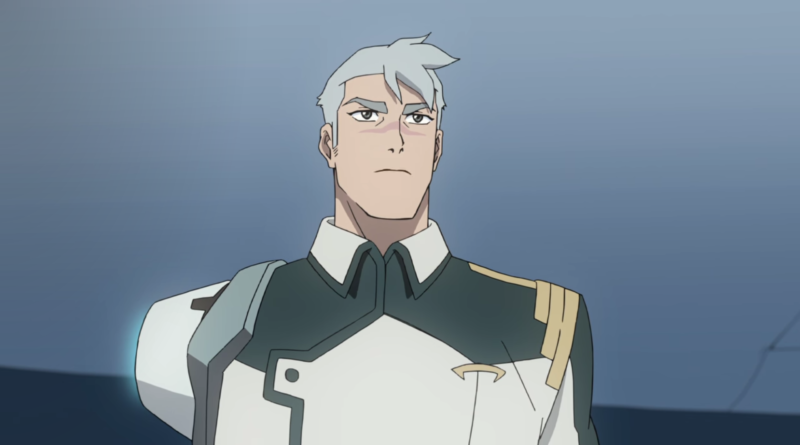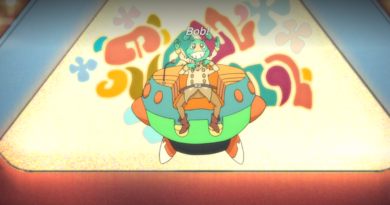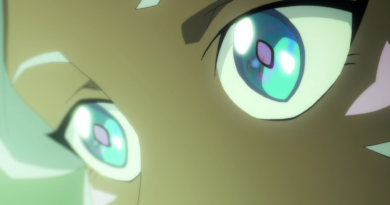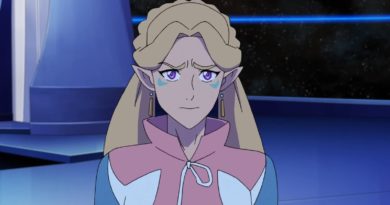The Winding Detour: An Analysis of Shiro’s character arc in Seasons 1-7
A common accusation I’ve been hearing ever since Season 6 came out is that the EPs didn’t know what they were doing with Shiro. That they never wanted to bring him back in the first place and just kept shuffling him around to give him something to do.
Not only is this contradicted by several interviews with the EPs, but when you actually look at Shiro’s story over the course of the series, particularly with the added context of his backstory that we get in S7E1 A Little Adventure, there was a clear arc in Shiro’s character from Point A to Point B. It’s not immediately obvious because there were a few unplanned zigzags in the middle.
In a Den of Geek interview in August 2017, LM and JDS say “We weren’t allowed to from the executives. That’s it. He had to come back. That’s pretty much it. We wanted him to be gone for a much longer period of time and we weren’t allowed to.” He was going to be gone longer. Not that hey never wanted to bring him back. JDS also later in the interview adds “Concessions have to be made and we’re still happy with where the story has gone, it just wasn’t our original idea.”
Leaving aside the fact that they’ve said they’re happy with where the story has gone even if it wasn’t their original idea, the biggest indicator that they knew what they were doing with Shiro was the fact that when you look back at Seasons 3 – 7 and connect all the dots not just in the show itself but in the similarities and references to the original 80s cartoon, there is a clear trajectory in Shiro’s arc that led to him serving as the captain of the Atlas.
Debates on the ethics of the clone merger aside, the end result of the Clone Shiro storyline, when combined with the revelations about Shiro’s illness in Season 7, presents his story from Seasons 3 – 6 as meta commentary on how DOTU adapted two similar-looking GoLion characters into a single person via the character of Sven Holgorsen. (Credit to Tumblr user @radioactivesupersonic for that analysis): The GoLion version, Takashi Shirogane, died and was replaced by his previously-unknown to the audience identical brother Ryou Shirogane. The DOTU version, Sven Holgersen, survives and returns to the team after a long absence. Voltron: Legendary Defender manages to combine both versions of the story into a single character with all the relevant memories.
And I want to expand on the DOTU/GoLion connections some more. In Beast King GoLion, Takashi Shirogane serves as the mentor for Akira Kogane, Keith’s original GoLion counterpart, and pilots the blue lion before his untimely death. Following his introduction later in the series, Ryou Shirogane serves as a key leader in the resistance against the Galra. In DOTU, both Shirogane siblings are adapted into the character of Sven Holgersson, who instead of dying as Takashi did, was sent to a hospital planet to recover, before being recaptured by the Drule (Galra). He escapes with the help of Romelle, and together they lead a significant rebel cell in the fight against the Drule Empire.
And in Voltron: Legendary Defender, Shiro starts off piloting a Voltron lion, before outside circumstances force him to step down from the role. Clone Shiro cannot initially pilot the Black Lion, and so becomes a leader of the Coalition, helping to coordinate between multiple rebel factions. Then Keith leaves the team, Clone Shiro pilots the Black Lion for a while, and then everything in Season 6 happens, and Shiro and his clone are fused into a single consciousness. After returning to Earth, Shiro quickly rises to become one of the highest-ranking people (if not the highest) at the Galaxy Garrison and serves as one of the leaders of the Coalition following the liberation of Earth in Season 7.
Whether other possible storylines for Shiro would have been better, or how well this storyline was pulled off, is a matter of individual opinion. But it is inaccurate to say that the writers had no plan for Shiro when his arc so closely mirrors that of his DOTU counterpart.
Popular interpretations of the line “I don’t see what’s more fulfilling than being a Paladin” assumed that this meant either Shiro was supposed to be the Black Paladin permanently, or that Clone Shiro would find something that would help him form his own identity. But there are multiple different ways that line can be interpreted, and a lot of fans have interpreted it based on what they wanted to happen, rather than what did happen.
In the context of the finished show – not in hypothetical early season 7 drafts with Black Paladin Shiro that the showrunners alluded to in a post-S7 interview, but the show we have on screen – this line is a type of foreshadowing known as Tempting Fate: where a character makes a hypothetical or rhetorical comment or question and is soon proven wrong.
Lines that typically tempt fate include:
- “__ is just a myth” and variations thereof. The myth soon turns out to be completely real.
- “Nothing could stop us now”. Something comes along to stop them.
- “That sounds easy”. It turns out to be a lot harder.
- “What’s the worst that could happen?” Do I even need to say it?
- “What could be worse then __?” Something turns out to be worse than __.
- “Can this day get any worse?” Yes, it can.
To break down a specific example, let’s take a look at The Incredibles:
On their wedding night, Elastigirl tells her husband that if their marriage is going to work, they need to be ready to support each other through thick and thin, the good times and the bad. To which Mr. Incredible responds:
“We’re superheroes. What could happen?”
We then immediately cut to a newsreel announcement detailing how the lawsuits levied against Mr. Incredible for injuries inflicted in the process of saving people’s lives resulted in the government legislating all superheroes into retirement and forcing Mr. Incredible and his wife to give up crime fighting.
While the line is typically used for negative consequences, there are examples where the character being proven wrong is a good thing. A common example would be someone saying, “it can’t get any better than this” and then quickly find out that it actually can get even better.
So, when Shiro says “I don’t see what’s more fulfilling than being a Paladin,” narrative convention dictates that by the time the series is over, he will have found something that is more fulfilling to him than being a Paladin.
And in Season 7, he does.
S7E1 A Little Adventure reveals that despite his fame as the youngest pilot to fly a solo mission to space, the Garrison staff had repeatedly doubted him because of his illness. He was seen as a liability, as not being capable of flying the Kerberos mission despite the records he’s broken and the things he’s achieved. Sam Holt had to argue with Sanda on his behalf just for him to be allowed to fly the mission, and even his then boyfriend was telling him, “you can’t do this. You’re too weak. You’re not capable enough for this.” Though Adam didn’t put it in as many words as Sanda did, the message Shiro received was the same.
But S7E11 Trial by Fire is where things come full circle. He’s back on Earth, his illness healed, and he’s literally come back from the dead. With Sanda’s betrayal and Sendak going on the offensive, everyone around him is scrambling and panicked, but when Shiro starts giving orders everyone immediately follows them. No one makes any comment about his rank or his age or his health or his fitness for the job. The man who left home sick and doubted is now the person they all look to for leadership.
At New York Comic Con 2017 a few weeks before the release of Season 4, the showrunners spoke of Shiro’s role in the coming season, saying that with Keith now flying the Black Lion, Shiro needed to adjust to a support role where he isn’t always fighting on the front lines in the thick of the action himself.
Unfortunately, Keith’s VA had schedule conflicts that forced the writers to pause Keith’s leadership development and write him off the team until Season 6 to accommodate the limited time Steven Yeun could make it to the recording studio. As a consequence of Keith’s arc being put on hold, so was Shiro’s, as Keith’s absence forced the writers to put Shiro back in the Black Lion until Keith came back in Season 6.
But what we see of his tenure as the captain of the Atlas in Seasons 7 and 8 lines up as an organic culmination of that arc. And in addition to that particular arc, a recurring theme we’ve seen throughout Shiro’s character development is learning that like Sam Holt told Admiral Sanda in The Last Stand: Part 1, you can’t control every situation. There is repeated pattern across the first seven seasons that because of his illness and his trauma, Shiro has difficulty accepting help from other people and allowing himself to be vulnerable:
- S7E1 A Little Adventure: In a flashback to before the Kerberos mission, he tells Adam, “You don’t need to protect me. This is something I need to do for myself.”
- S1E9 Crystal Venom: Shiro only starts to grow agitated and directly question Sendak during the memory transfer once Coran and the other Paladins have left. One of the taunts he hears from Sendak is “The others don’t know what you know. They haven’t seen what you’ve seen.”
- S2E1 Across the Universe: Compared to his optimism when leading the rest of the team and the way he constantly encourages everyone, Shiro is more flippant and vulnerable with Keith in this episode, particularly in how casually he treats having a glowing wound from Haggar in his side.
- S2E3 Shiro’s Escape: When the team questions his decision to look for the mysterious Galra who helped him escape, he overrules their objections and insists that his memory of the event is real despite the Paladins’ valid concerns.
- S2E7 Space Mall: Tries to work with the Black Lion to strengthen their bond and drive Zarkon out. When the Lion apparently takes off on its own, he panics at the lack of control and starts demanding the lion turn around. When Zarkon attacks him on the astral plane, Shiro wins by realizing that he needs to trust the Black Lion as a partner instead of using it as a tool.
- S3E6 Tailing a Comet: After the trauma of escaping from a Galra laboratory a second time, Shiro is more closed off with Keith compared to their solo interactions in S2E1. He asks Keith “How many times will you have to save me before this is over?” His tone sounds exhausted and resigned, as if he feels he shouldn’t need someone to save him.
- S4E1 Code of Honor: Despite saying S1E4 that “People have to want to be part of a team. They can’t be forced,” Shiro continues trying to force Keith to continue as the Black Paladin despite Keith’s clear reluctance.
- S5E3 Postmortem: Shiro argues with the team and leverages his authority as the Black Paladin when they question him about the risks of taking Lotor to the Kral Zera.
- S5E4 Kral Zera: When the rest of the team won’t support his decision, Shiro flies Lotor to Fayiv by himself.
- S5E6 White Lion: Shiro attempts to open up to Lance and admits that he hasn’t been feeling like himself lately.
- S6E1 Omega Shield: When the mental link between him and Haggar causes him headaches during the missing, Shiro brushes aside the team’s concern, repeatedly telling them “I’m fine”. Later, he pretty much has a panic attack when Honerva forces her way into Oriande and the backlash reverberates through the link, distracting the paladins at a crucial moment when lives were on the line and their plan required Shiro’s prosthetic hand in order to succeed.
- S6E3 Monsters and Mana: Shiro admits at the beginning that he’s “trying to take a mental break”, and says at the end that after playing the game with the team his head “feels so much better.”
- S7E6 The Journey Within: When Lance comments on Shiro just now bringing up a way to recharge the lions, Shiro sarcastically comments that “I guess having my consciousness transplanted from the infinity of Voltron’s inner Quintessence into the dead body of an evil clone of myself has left me a little out of sorts these last few weeks.” This is the most open he’s been about anything bothering him since the end of Season 5, and he’s saying it to the entire team at once and not just Keith or Lance.
There is a noticeable pattern here: Shiro started the series suffering from PTSD, but kept it hidden from the team, only attempting to deal with his trauma when he was alone. Because of his disease, he had already developed a mentality of “I have to be strong. I need to do this by myself,”by just bottling up his problems so that others don’t see his pain. And once he’s the Black Paladin, expected to be “in control at all times”, he simply continues with that pattern of behavior. The only person he ever allows to see past the level-headed mask he presents to the rest of the team is Keith.
But the events of S3E5 bring further trauma, tearing him from a place of safety and security back into the hands of the people who violated him. After his escape not even Keith is allowed to see past the walls he puts up. From there, his behavior in Seasons 3 – 5 is driven by his need to re-establish that feeling of safety and security that he had back in Seasons 1 – 2.
It’s fitting that the ship Shiro now commands is called the Atlas. In Greek Mythology, Atlas was the titan who held up the sky on his shoulder. Nowadays, it’s used to refer to anyone who carries a heavy burden of any kind. Shiro has been carrying the weight of his trauma since the first episode, channeling his need for control into his work as the Black Paladin. But as S6E1 demonstrated, bottling up his pain and dealing with it alone only created more problems. In order for Shiro to truly heal, he needed to learn to share the burden instead of stoically going it alone.
It reminds me of the stigma that still surrounds mental illness today, but in particular, it reminds me of the damaging idea that someone who has mental health problems is somehow weak for seeking help and not dealing with it on their own. And that is the underlying principle of Shiro’s character arc: that you don’t have to deal with your personal demons alone. That it is not weak to seek help and rely on support from the people around you. I believe a verbal acknowledgement of this was cut from Season 8 amidst all the other edits, but the arc is still there even though it unfortunately wasn’t addressed out loud.
So, despite a clear – albeit tangled in the middle due to circumstances beyond the writers’ control – line for Shiro’s arc leading to where he is in Season 7, why do fans continue to insist that LM and JDS didn’t know what they were doing with him after they brought him back early?
Part of it comes down to the fact that, as I mentioned once in a brief post, the main flaw of the show’s writing is that is sometimes relies on the “show don’t tell” maxim a little too much: all of the details are there, but you don’t always notice them because the narrative doesn’t call attention to them.
The other part is that this fandom has an unfortunate habit of making quick judgements about characters and storylines based on first impressions, building theories and head canons around those impressions, and then dismissing anything that contradicted those theories and headcanons as bad writing or a character being OOC. (Remember all the Lance-obsessed antis who acted like he was so fragile and underappreciated he’d drop dead if he wasn’t constantly being praised? Because I do). And the gaps between season drops didn’t help matters.
Due to the way Seasons 3 – 6 were structured and released, we had almost a full year to get attached to our own headcanons and theories as to what was happening with Shiro and Operation Kuron. Fans who believed that S3-6 Shiro was a clone wrote theory after theory where the current Shiro’s status as a clone was discovered and the clone was deprogrammed and allowed to live his own life and develop into his own person separate from Shiro. While fans who didn’t believe the clone theory dug in their heels and continued to argue against Shiro being a clone.
In the end, both sides were wrong, but everyone came together to cry foul because they thought their respective interpretations were better than what the writers ended up going with. While I guarantee that with this fandom’s history there would almost certainly have been backlash no matter what (and I’ll grant you that the ethics of the clone merger are a little iffy), I think that if Seasons 3 – 6 were released as two full 13 episode seasons in 7 months instead of 4 half-seasons over the course of 10 months, it would have been a lot less severe because both sides of the Clone or Not Clone argument wouldn’t have had as much time to become entrenched.
In summary: contrary to popular belief, the writers and EPs knew what they were doing with Shiro. They managed to combine three different characters across two different versions of the IP into a single character with an arc that mirrored the story of the DOTU character that he was based on. His character development in relation to his PTSD was meant to reject the stigma that people with mental illnesses are somehow weak for needing help and support from the people around them. I don’t speak for all Shiro fans, and we can debate about how well the arc was handled and the quality of it until the end of time. But it’s inaccurate to say that the showrunners were just making stuff up as they went along where Shiro was concerned when there is a clear, if tangled, trajectory from Point A to Point B for his character arc.




Enserio que manía tienen de satanizar a Adam